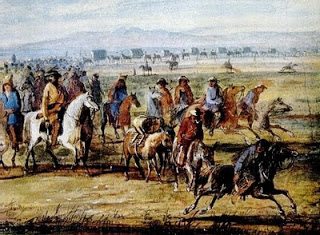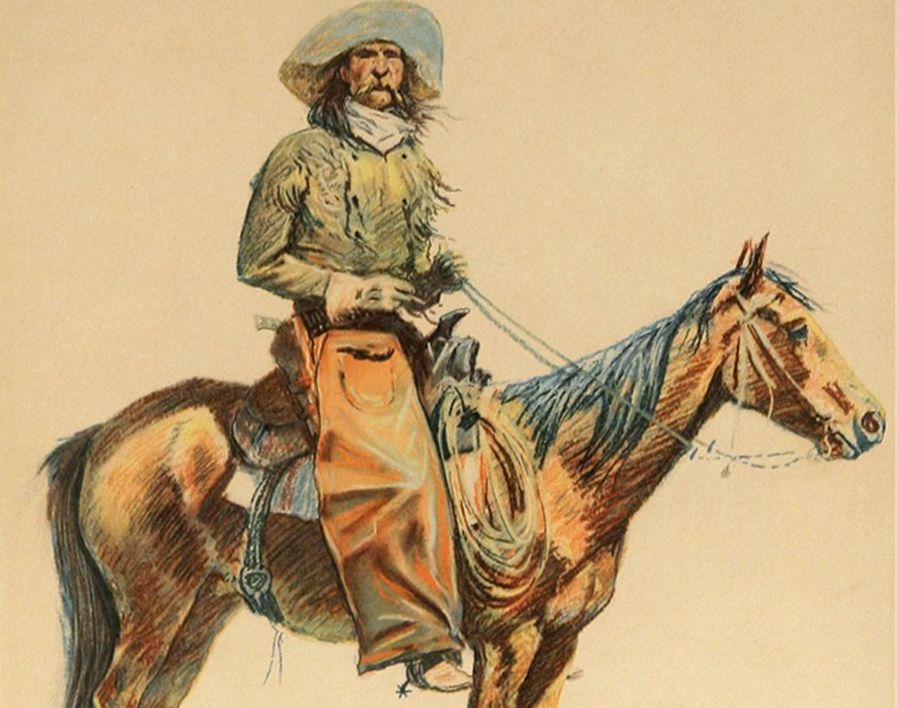Have you ever wondered about the history of horseback riding? It’s such a fascinating topic that takes us back to ancient times. In fact, horseback riding has been an integral part of human culture and civilization for centuries. From the early domestication of horses by the nomadic tribes to the development of horseback riding as a means of transportation, there’s so much to learn about this incredible practice.
On my blog, “http://horsebackridingdude.com/”, I aim to delve into the rich history of horseback riding and explore its various facets. You’ll find articles that discuss the origins of horseback riding, its significance in warfare and hunting, and even its role in sports and recreation. I strive to provide reliable and engaging content that not only educates but also sparks the interest of my readers.
If you’re curious to know more about the history of horseback riding, be sure to check out my blog. I’m constantly adding new posts that dive deeper into this captivating topic. From the evolution of horsemanship techniques to the cultural importance of horses in different parts of the world, there’s always something intriguing to discover. Don’t forget to stay till the end of each post, where I provide 10 common questions and their answers, so you can expand your knowledge even further.
Exploring the History of Horseback Riding

Introduction
Horseback riding is an ancient practice that has captured the imaginations of people throughout history. From its early origins as a means of transportation to its evolution as a sport, horseback riding has had a significant impact on human culture and society. In this article, we will delve into the rich history of horseback riding, exploring its origins, development, and various disciplines. We will also discuss the benefits of horseback riding, famous horses and riders, safety tips, and the environmental impact of this beloved activity.
Early Origins of Horseback Riding
Ancient Origins of Horseback Riding
Horseback riding can be traced back to ancient civilizations, where horses were initially domesticated for their utility as pack animals. The earliest evidence of horseback riding dates back to around 3500 BCE in the Eurasian Steppes. The nomadic peoples of Central Asia, such as the Scythians and Huns, were adept at riding horses and used them for hunting, herding, and warfare.
Horseback Riding in Different Cultures
As horseback riding spread across different regions, it became deeply ingrained in the cultures of various societies. In ancient Egypt, horses were revered and depicted in artwork and tomb paintings. The Persians, known for their equestrian skills, introduced the concept of cavalry warfare. The Greeks and Romans also embraced horseback riding and incorporated it into their military strategies and sports.

The Evolution of Horseback Riding Equipment
Invention of the Saddle and Bridle
The development of the saddle and bridle revolutionized horseback riding, providing riders with increased comfort, control, and stability. The invention of the saddle can be traced back to the Scythians, who used leather pads to provide padding and support for the rider. Over time, saddles evolved to incorporate more advanced designs, such as the tree saddle, which distributed the rider’s weight more evenly.
The introduction of the bridle, including the bit and reins, allowed riders to communicate and control their horses more effectively. The bit, a metal mouthpiece placed in the horse’s mouth, enabled riders to guide their horses with precise movements of the reins.
Development of Stirrups and Riding Boots
The invention of stirrups, believed to have originated in ancient China, further revolutionized horseback riding. Stirrups provided riders with increased stability and balance, allowing for more efficient control of the horse. This advancement greatly impacted warfare, as riders could now wield weapons with greater ease and accuracy.
The development of riding boots also played a crucial role in horseback riding. These specialized boots provided riders with increased comfort, protection, and grip in the stirrups. As horseback riding became more prevalent, different styles of riding boots emerged, each designed to cater to specific disciplines and preferences.
Horseback Riding as a Mode of Transportation
Horseback Riding in Ancient Civilizations
In ancient civilizations, horseback riding served as a primary mode of transportation. The ability to ride a horse allowed individuals to cover vast distances at a faster pace than on foot, enabling the exploration and expansion of civilizations. From the Mongols’ vast empire to the Native Americans’ nomadic lifestyle, horseback riding facilitated trade, communication, and migration.
Horseback Riding in Medieval Times
During the Middle Ages, horseback riding remained essential for transportation, particularly for knights and noblemen. Horses were used in warfare and jousting tournaments, displaying the skills and horsemanship of the riders. As castles and fortresses were built, equestrian infrastructure, such as stables and riding arenas, became integral parts of these structures.

Horseback Riding as a Sport
Introduction of Equestrian Sports
Horseback riding gradually transitioned from a mode of transportation to a recreational activity and sport. Equestrian sports, encompassing various disciplines and competitions, emerged and gained popularity across different cultures. These sports not only showcased the bond between horse and rider but also tested their skills, agility, and teamwork.
Different Types of Horseback Riding Competitions
Horseback riding competitions encompass a wide range of disciplines, each with its unique set of rules and requirements. Some popular equestrian sports include dressage, jumping, endurance riding, and mounted archery. Dressage focuses on the precise execution of movements, while jumping tests a horse’s ability to navigate obstacles. Endurance riding challenges riders and horses to cover long distances, and mounted archery combines archery skills with horseback riding.
Benefits of Horseback Riding
Physical Health Benefits
Horseback riding offers numerous physical health benefits for riders. The act of riding requires core stability, balance, and coordination, which helps to improve overall body strength. It also enhances cardiovascular fitness, as riders engage in constant movement and control while riding. Additionally, horseback riding can improve flexibility, posture, and muscle tone.
Mental and Emotional Benefits
Apart from the physical benefits, horseback riding has mental and emotional advantages as well. Riding horses provides a unique opportunity to connect with animals, fostering a sense of companionship and empathy. The rhythmic movement of the horse and the tranquility of nature can be therapeutic and calming, reducing stress and anxiety. Horseback riding also promotes self-esteem, confidence, and problem-solving skills, as riders learn to communicate and work in harmony with their horses.

Different Styles and Disciplines of Horseback Riding
English Riding
English riding, also known as classical riding, is characterized by the use of a forward seat and a direct rein contact. It emphasizes correct position, balance, and finesse. English riding encompasses disciplines such as dressage, show jumping, and eventing.
Western Riding
Western riding, originating in the western regions of the United States, is associated with cattle ranching and cowboy culture. It involves the use of a Western saddle and a single rein, with a looser rein contact compared to English riding. Western riding disciplines include reining, barrel racing, and cutting.
Dressage
Dressage is a discipline that focuses on the systematic training of horses and the precise execution of intricate movements. It emphasizes the development of the horse’s balance, suppleness, and responsiveness to the rider’s aids.
Jumping
Jumping, also known as show jumping or stadium jumping, involves navigating a course of jumps within a time limit. It tests a horse’s ability to clear obstacles with speed and agility while maintaining control and focus.
Endurance Riding
Endurance riding is a long-distance race that challenges both horse and rider to cover various terrains over a specific distance, often ranging from 25 to 100 miles. The sport requires careful management of the horse’s health and stamina throughout the race.
Mounted Archery
Mounted archery combines the ancient art of archery with the skill of horseback riding. Riders shoot arrows at targets while moving at different gaits, showcasing precision, accuracy, and coordination.
Famous Horses in History
War Horses
Throughout history, certain horses have become renowned for their roles in warfare. From Alexander the Great’s horse Bucephalus to Napoleon’s celebrated horse Marengo, these equine companions played instrumental roles in shaping the outcomes of battles and wars.
Racehorses
Racehorses have captivated audiences with their speed, endurance, and competitive spirit. Horses such as Secretariat, Man o’ War, and Seabiscuit have achieved legendary status, breaking records and capturing the hearts of racing enthusiasts worldwide.

Famous Horseback Riders
Exploring Notable Horseback Riders Throughout History
Numerous individuals have made their mark in the world of horseback riding, showcasing exceptional horsemanship, skill, and dedication. From great military leaders like Genghis Khan and Joan of Arc to modern-day equestrian athletes like Charlotte Dujardin and Beezie Madden, these horseback riders have left a lasting legacy in the equestrian world.
Horseback Riding Safety Tips
Proper Attire and Equipment
Safety should always be a priority when participating in horseback riding. Riders should wear helmets to protect their heads in case of falls or accidents. Additionally, wearing appropriate riding boots and clothing that allows for ease of movement and protection is essential.
Understanding Horse Behavior
It is crucial for riders to have a basic understanding of horse behavior to ensure their safety and that of the horse. Knowing how to approach, handle, and interact with horses can prevent accidents or miscommunication between rider and horse.
Basic Riding Techniques
Learning and practicing basic riding techniques is vital for safe horseback riding. Riders should be familiar with proper mounting and dismounting techniques, as well as proper posture and balance while riding. Instruction from a qualified riding instructor can help riders develop and improve these essential skills.
Horseback Riding Etiquette
Trail Riding Etiquette
When riding on trails or in public spaces, riders should adhere to certain etiquette guidelines. These guidelines include respecting the rights of other trail users, yielding when necessary, and leaving no trace by properly disposing of waste and avoiding damage to the environment.
Arena Etiquette
In riding arenas, riders should follow specific etiquette practices to ensure a safe and harmonious environment. This includes giving way to faster or more advanced riders, maintaining a safe distance from other riders, and keeping the arena clean and free of obstacles.
Horseback Riding for Therapeutic Purposes
Equine Therapy for Individuals with Disabilities
Horseback riding has been recognized as a valuable therapeutic activity for individuals with disabilities. Equine therapy, also known as hippotherapy, has been shown to improve physical strength, balance, and coordination in individuals with conditions such as cerebral palsy, autism, and multiple sclerosis. Additionally, the emotional and psychological benefits of interacting with horses can have a profound impact on these individuals’ well-being.
Environmental Impact of Horseback Riding
Conservation and Preservation of Equestrian Trails
As horseback riding enthusiasts, it is essential to practice responsible riding to minimize the environmental impact. This includes staying on designated trails, avoiding sensitive habitats, and properly disposing of waste. Participating in trail maintenance initiatives and supporting organizations dedicated to the preservation of equestrian trails can also contribute to maintaining a sustainable environment for horseback riding.
Conclusion
Horseback riding has a rich and diverse history that spans across continents and cultures. From its roots as a mode of transportation to its evolution as a sport and therapy, horseback riding continues to captivate people worldwide. The physical, mental, and emotional benefits, along with the various disciplines and styles, make horseback riding a beloved activity for individuals of all ages and backgrounds. As we explore the history of horseback riding, we discover the lasting legacy of this timeless practice and its enduring impact on human society.
